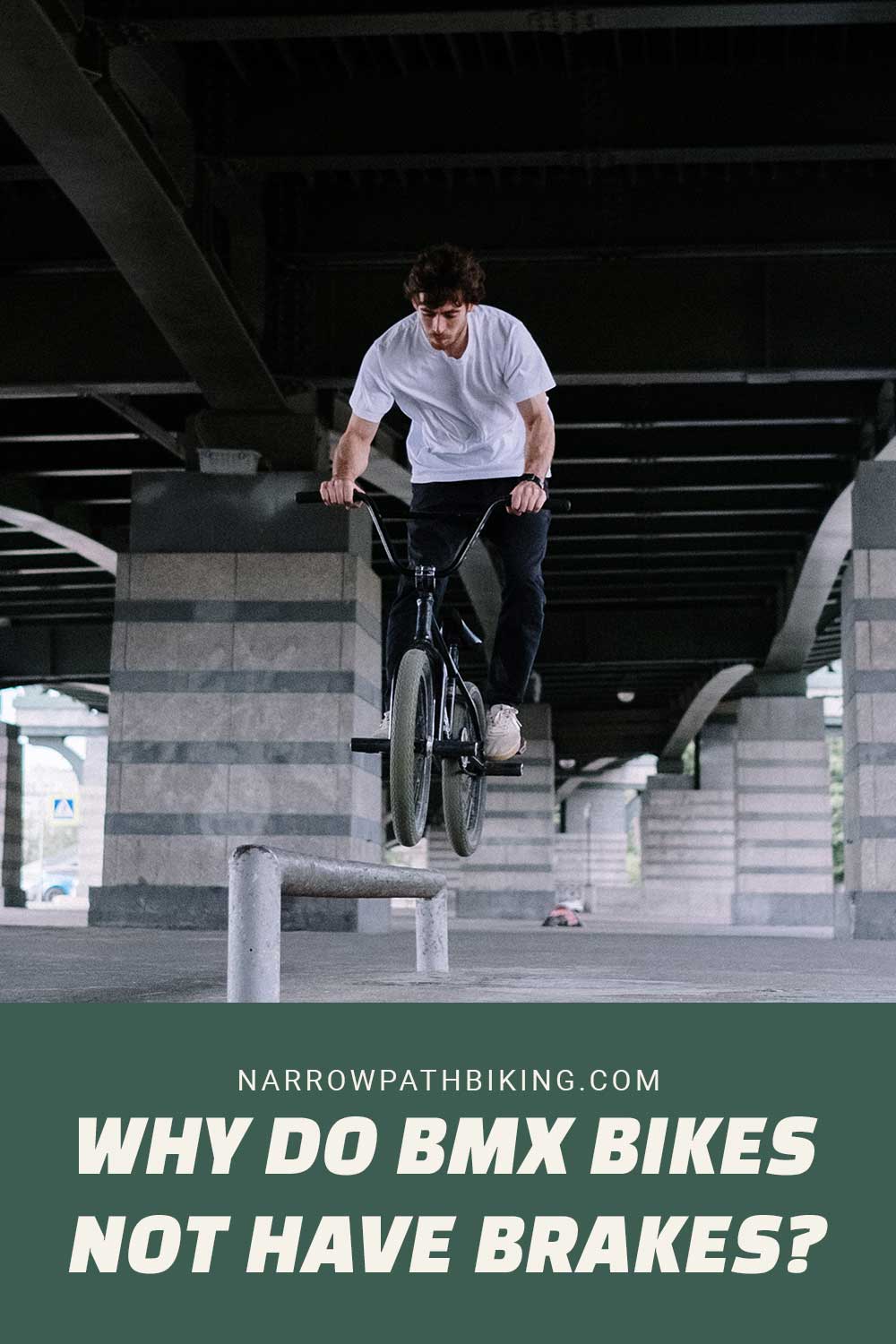In specific competitions, especially X-games like trick events, a BMX bike will be better off without the brakes getting in the way of free movement.
In effect, removing the brake systems will make the bike lighter, helping a tricks rider get more air under them when they hit jumps and also help whip the frame around faster to perform certain feats.
There are a few other situations where having bike brakes is not required. Still, the brakes would be removed to help with mobility, speed, and jump height to get an edge on the competition.
Are all BMX Bikes Without Brakes?
No, there are three basic brake settings in which a BMX bike can be set up. There is the as before-mentioned no brake system that is for trick riding and speed.
Then you have the two-brake system, standard on most bikes, equipped for mountain riding and other BMX racing that needs more speed regulation control.
Last comes the hybrid single brake system, primarily located in the bike’s rear. This is for a mixture of speed and mobility but also to keep control of the pace in the midst of competition.
What are BMX Brakes Called?
There are about half a dozen different types of BMX brakes on the market, all of which are up to the task of working in the most competitive of settings. Each of these will use different mechanisms to keep the bike in control and stop when needed.
That being said, each rider will have their preferences and sponsorships to consider when selecting one of these systems for their BMX. For simplicity purposes, below is a list of the seven more well know braking systems used in BMX Competition:
- Caliper brakes
- Cantilever Bicycle brakes
- Coaster brakes
- Mechanical Disc brakes
- Gyro, Rotor brakes
- U-brakes
- V-brakes
Do Brakes Add Weight?
Depending on the type of brakes, brand, and then the product model will have varying weights to them. In short, yes, brakes will add around two pounds of additional weight to the ride or more depending, again, on the type.
Suppose a rider is going to compete in a tricks competition. In that case, there will be no need for a brake system.
Removing the extra weight will likely be enough to catch an extra second in the air which can be long enough to land that gnarly trick; get a good score from the judges for the extreme speeds and going-for-it factor.
Is it Easier to Perform Tricks?
The primary purpose of removing weight from a vehicle is to gain speed, which is the same for the BMX bike when the braking system is taken off.
What happens is that the tricks rider can push the bike to go faster and get higher off the jumps, which in turn will result in more extreme tricks and better scoring with the judges.
To be on point, the lighter BMX bike can perform a more comprehensive range of tricks because of how much easier a brakeless frame can be manipulated in the air, coming off a rail, or coming out of a halfpipe.
How to Stop if BMX has no Brakes
The answer may seem relatively simple, but the truth is that the best way to stop a tricycle is to pop up a ramp and let the slope slow the ride.
Rolling to a stop will be the best course of action; otherwise, steering gently into the grass will help stop the momentum of a bike if braking is not an option.
I have even seen a rider bring their foot back and use the heel as a manual brake, slightly touching the back wheel to adjust speed and slow to a jumping-off pace. There are other ways of stopping.
Final Thoughts on Why do BMX Bikes not Have Brakes
BMX and Mountain bikes will require different braking systems to function when in the heat of competition. A BMX bike, however, can enter a tricks competition or certain races without brakes to minimize the weight of the frame and increase speed and mobility in the air.
There are no other reasons to have the brakes removed from a bike other than crafting a tricks bike; having two brakes is the safer setup for the average rider or mountain biker.
Not all BMX bikes are without stopping power, and some models come in single-brake and traditional double-brake systems.

